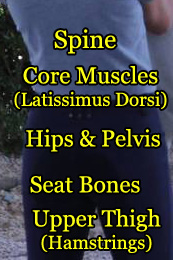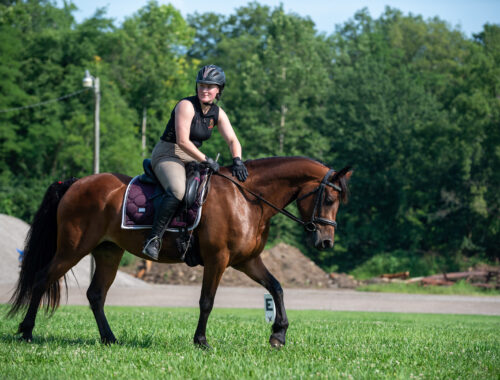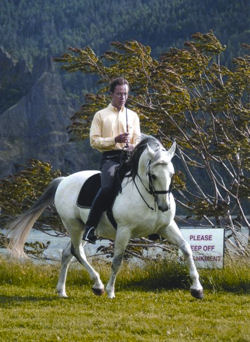The Passage
Passage Defined
This is a very collected, cadenced trot that is characterized by elevated movement of the knees and hocks, as well as a defined engagement of the quarters. This trot has a prolonged period of suspension.
How to Execute the Passage
Start in the walk, trot or piaffe.
Apply subtle leg aids and brace the back.
Lightly restrain the forward movement of the horse with the hands.
Ride a few steps of passage.
Finish by riding the horse forward in the trot. This is the horse’s reward for offering good passage steps.
Notes:
Before begining the passage, the horse must be working “through”
He must not show resistance to the aids.
The quality of the passage is directly related to the balance between the horse and rider.
When done correctly, the rider will feel as if he is floating.
Using a whip and/or training in hand can be used to improve the passage.
To liven or improve the impulsion, change tempo.
The toe of the raised foreleg should come to the middle of the cannon bone of the opposing foreleg.
The horse should remain calmly on the bit with a raised arched neck and head close to vertical. The poll should be the highest point of the arch.
Purpose of the Passage
To demonstrate adequate engagement of the hindquarter and collection.
To demonstrate the carrying capacity of the hindquarter.
Common Errors in Execution
The horse’s hindquarter hocks are disengaged or trail out behind.
The horse is on the forehand and croup too high.
The horse becomes tense in the movement.
The horse is not straight or swings from left to right.
The horse’s forelegs cross generally because the horse is not warmed up properly.
Author: Dressage Academy
Lengthening of Stride
The Rein Back
You May Also Like

The Seat
February 7, 2018
Does Consistency Really Matter?
August 9, 2025